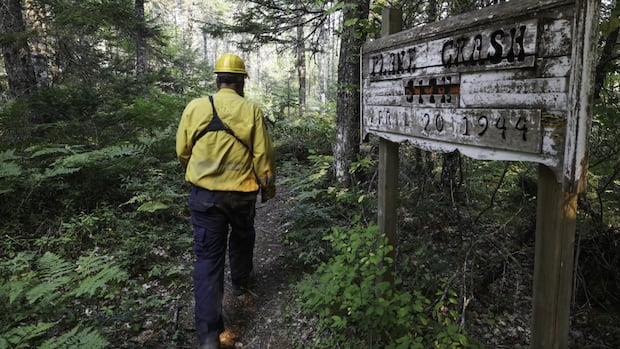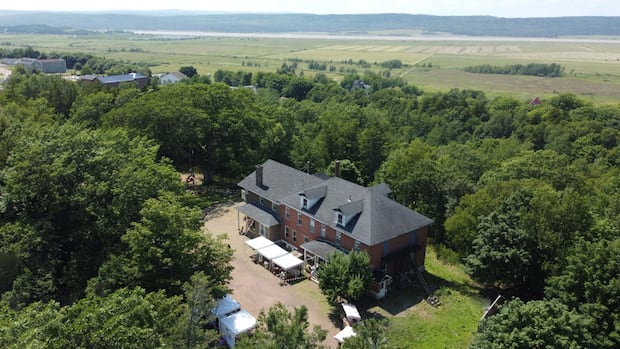Weather conditions in areas with wildfires are improving for firefighters, with cooler temperatures and increased humidity, but officials say they will continue fighting the blazes for some time.
The change in conditions, with moderate to low winds, has allowed crews on the ground to make some progress in fighting wildfires, officials said Thursday.
That favourable weather is expected to continue, with precipitation in the forecast for areas in northern and eastern Manitoba with active wildfires.
But Kristin Hayward, assistant deputy minister for the Conservation Officer Service and Manitoba Wildfire Service, told reporters at a news conference that the amount of precipitation is variable and uncertain, and it won’t be enough to put out wildfires alone.
There are 27 active wildfires and a total of 111 fires to date, officials said Thursday.
With thousands out of their home, some in congregate shelters, Manitoba remains under a provincewide state of emergency.
Manitoba has so far deployed 650 people to support the firefighting efforts, along with just over 175 firefighters from out of province, including some from the United States who arrived on Thursday, Manitoba Natural Resources Minister Ian Bushie told reporters.
The support from across the country and within the province has been “instrumental” in Manitoba’s firefighting and evacuation response, he said.
There are a number of out-of-control wildfires in close proximity to communities, including a fire near the town of Lynn Lake that is over 72,000 hectares.
The Office of the Fire Commissioner is working with local fire departments to protect properties, as well as to shore up areas north and west of the community, Hayward said.
Firefighter crews are making “good progress” in battling the wildfire in the vicinity of Pimicikamak Cree Nation, which is over 3,000 hectares. Additional crews will be deployed Thursday.
The largest wildfire in Manitoba is close to Flin Flon and Sherridon in the northwest, after separate blazes merged into one, Hayward said.
The Flin Flon fire started in Saskatchewan and joined the Sherridon fire; they now cover over 300,000 hectares in Manitoba.
Near Pukatawagan, also known as Mathias Colomb Cree Nation, a wildfire has spread to nearly 10,000 hectares. Hayward said Manitoba has made “great progress” to secure the community from that fire, with the help of favourable winds.
Read the previous story below:
Manitoba’s officials are giving an update on the wildfires burning out of control across the province, forcing thousands out of their homes.
CBC News is livestreaming the news conference our website and on CBC Gem.
Manitoba Natural Resources Minister Ian Bushie, Transportation and Infrastructure Minister Lisa Naylor, Kristin Hayward, assistant deputy minister for the Conservation Officer Service and Manitoba Wildfire Service, and Christine Stevens, assistant deputy minister for the Manitoba Emergency Management Organization, are expected to speak.
Assembly of Manitoba Chiefs Grand Chief Kyra Wilson told CBC News earlier Thursday that worsening air quality has forced five more First Nations in Manitoba to start preparing the evacuation of vulnerable residents with medical conditions.
Four of those communities are in Manitoba’s Island Lake region, about 470 kilometres northeast of Winnipeg. The other community is Misipawistik Cree Nation, roughly 390 kilometres northwest of Winnipeg.
While getting members with respiratory issues out promptly is a primary concern, the leaders of their communities want to ensure hotel spaces are available in southern Manitoba before they start moving residents, Wilson said.
The evacuation of other communities in recent days has been disorganized and unco-ordinated, Wilson said, with some people, including vulnerable residents with medical conditions, still waiting in line for accommodation or meals.
“Unfortunately we have no real involvement,” Wilson said, with the Red Cross providing evacuation services to First Nations under an agreement with Indigenous Services Canada.
Wilson is calling for a regional emergency management strategy in which Indigenous communities have more participation than they do now.
“We need First Nations leadership to be involved in the decision-making, and the response time needs to be quick,” she said.
Find the latest wildfire information:
Are you an evacuee who needs assistance? Contact Manitoba 211 by calling 211 from anywhere in Manitoba or email [email protected].







